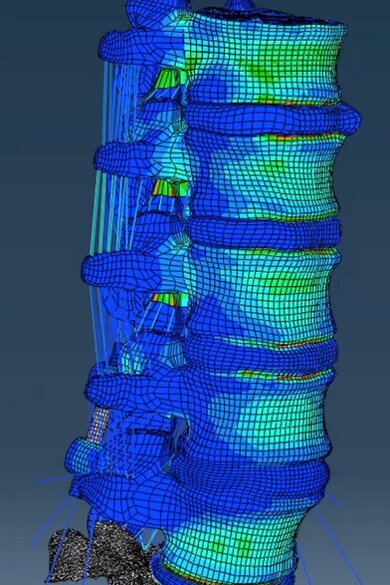
Severe low back pain is a very common affection of the skeleton. When conservative treatment does not work, lumbar interbody fusion is a routine treatment to realize satisfactory pain relief. During this procedure, (part of) the intervertebral disc between the vertebral bodies is resected, followed by insertion of an interbody cage in its place. The procedure relies on restoration of intervertebral disc height, alleviation of nerve impingement, and restoration of mechanical stability of the spine. On the longer-term, the inserted cage should facilitate bone on- and ingrowth to realize a stable bony fusion between the two adjacent vertebrae.
However, time to establish a decent fusion may be well above half a year, and rates of pseudoarthrosis (non-union) after lumbar fusion surgery may even range up to 35%. Conventionally, polyetheretherketone (PEEK) and titanium are two well-accepted cage materials. Titanium cages facilitate bone on-growth excellently but may induce adverse effects due to their high stiffness compared to the stiffness of bone. In contrast, PEEK cages do not facilitate bone on-growth due to their biological inertness but have a stiffness matching the stiffness of bone. So, both materials have their limitations.
Recent developments in metal manufacturing techniques enables fabrication of titanium interbody cages by additive manufacturing (3D printing). In contrast to conventional titanium production techniques, 3D printing enables production of tailored porous designs that are mechanically less stiff and biologically favourable surfaces for bone growth. In this project the in vivo performance of a commercially available 3D printed titanium cage is compared to a conventional PEEK cage. Additionally, it is investigated whether the performance of the 3D printed titanium cage can be improved by computationally optimizing the design of the cage.